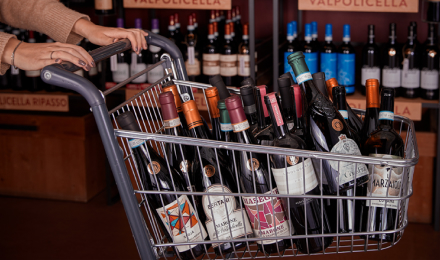- Tuscany >
- White wines >
- Wines
The best white wines of Tuscany
Among Tuscany’s most important whites, Vermentino stands out, and is found pretty much all over the region, starting with the interregional designation it shares with Liguria, namely Colli di Luni DOC (Denominazione di Origine Controllata). Compared to Sardinian Vermentino, like the Gallura DOCG, the Tuscan cultivar generally has a slightly lower ABV, attractive freshness and aromas of white-fleshed fruit (peach, apple), citrus hints and a touch of almond. Vermentino Riviera Ligure di Ponente is different again, with a highly aromatic nose, often tending towards hints of aromatic herbs such as sage. In addition to Colli di Luni DOC, in the same province, that of Massa Carrara, there is another Vermentino-based designation, Candia dei Colli Apuani, also produced from Albarola (which we find in Liguria in the Sciacchetrà e Cinque Terre DOC, again together with Vermentino) and Malvasia.
Major designations
Vernaccia di San Gimignano is one of Tuscany’s iconic whites, produced from the native variety of the same name, to which up to 15% of Riesling and other varieties can also be added. Going down through Tuscany we come to the Ansonica Costa dell’Argentario DOC zone in the province of Grosseto, covering the municipalities of Manciano, Orbetello and Capalbio, Isola del Giglio and Monte Argentario. The wine is produced from Ansonica, topped up with 15% of other authorised varieties. Trebbiano Toscano is used in many designations, including Bianco della Valdinievole, in the province of Pistoia, Bianco di Pitigliano DOC, to which Malvasia and other grapes can be added, in the province of Grosseto, and Bianco Pisano San Torpé, in the area around Pisa. In Montalcino, Vino Bianco Moscadello di Montalcino DOC is produced from Moscato grapes, in sparkling, still and late harvest versions.
Pairings to try
The wines of Tuscany, both red and white, are among the most appreciated in Italy’s wine scene, and thanks to their great variety can be paired with any course. A classic Vermentino Toscano, showing attractive freshness and aromas of white-fleshed fruit (peach, apple) with hints of citrus and almond, can be paired with flavourful fish dishes, such as monkfish or tuna in a pistachio crust. Bianco della Valdinievole Toscano DOC, with its beautiful bright straw yellow hue, and a nose of summer flowers over a dry, vibrant palate, allows a wide variety of pairings, from vegetable soups to grilled fish and shellfish. A good glass of Moscadello di Montalcino in the still version, with its aromatic, intense nose and fresh, pleasing palate, goes well with a seafood appetiser, or tempura vegetables. If, on the other hand, you want to try the late harvest version, the classic pairing is with biscuits, such as cantuccini dipped in the wine.
More harmonious flavours and aromas
Pitigliano, a rather delicate Tuscan white wine, offering notes of flowers and white-fleshed fruit over a generous, tangy palate, can again be paired with the whole meal, as long as the dish is not excessively complex in terms of aromas and taste. At least 75% Trebbiano-based, topped up with other white grape varieties, the vibrant, characteristic Pisano San Torpé offers slight hints of citrus, and goes well with eels and baked fish. Taking a trip to the island of Elba, Ansonica has a beautiful, intense bouquet of ripe peachy and dried fruit and an almond aftertaste. It pairs well with shellfish in general, while the lighter, more approachable Ansonica dell’Argentario goes better with more delicate dishes. Vernaccia di San Gimignano, with a bright hue tending towards gold, mineral aromas on the nose and an elegant, full-flavoured, firmly-structured palate, is ideal with more complex dishes, and even with white meat.







